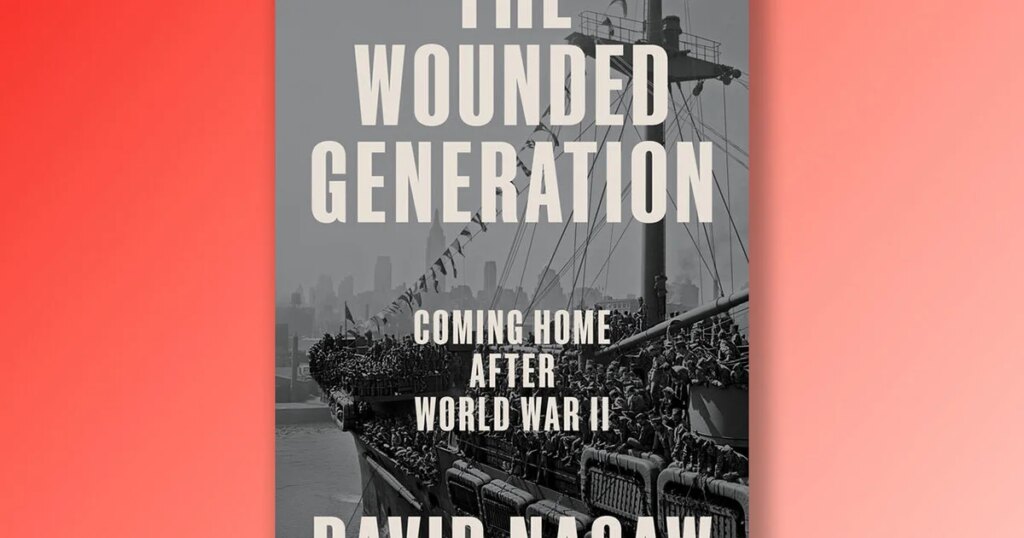Introduction
In the aftermath of World War II, millions of American veterans returned home, heralded as heroes but quietly grappling with the hidden scars of war. In his thought-provoking book, The Wounded Generation, historian David Nasaw delves into the psychological wounds of these veterans, which often went unrecognized or untreated. He highlights the societal changes, the challenges of reintegration, and the long-lasting impacts of post-traumatic stress disorder (PTSD) on individuals and families who were affected. Through a historical lens, Nasaw explores the unintended consequences of a military conflict that transformed a generation.
| Article Subheadings |
|---|
| 1) The Nature of World War II’s Impact on Veterans |
| 2) The Psychological Toll of Combat |
| 3) Society’s Response to Returning Heroes |
| 4) The Changing Landscape of Post-War America |
| 5) Moving Toward Recognition and Treatment |
The Nature of World War II’s Impact on Veterans
World War II was unlike any other conflict in human history, not only in its scale but in its profound impact on those who fought. Approximately 16.4 million Americans served in the armed forces, representing 12% of the nation’s population. Among them were fathers, husbands, brothers, and sons who faced brutal combat across diverse terrains. The war lasted nearly four years, with servicemen enduring an average of 33 months of strenuous duty, including time in hostile environments. As veteran Bill Mauldin noted, soldiers who returned were markedly different from those who left home, carrying invisible emotional scars that would affect their families and community for decades.
The Psychological Toll of Combat
Returning veterans often struggled with severe mental health issues, many of which were not understood at the time. Symptoms such as nightmares, anxiety, and uncontrollable rage plagued countless individuals, but their experiences were frequently dismissed as mere battle fatigue. The term PTSD would take years to gain recognition. In fact, a significant number of veterans sought relief through alcohol, attempting to self-medicate their distress. With 40% of discharged soldiers being deemed to have “neuropsychiatric defects,” it became evident that the psychological toll of warfare required greater societal awareness and intervention.
Society’s Response to Returning Heroes
Upon returning home, many veterans encountered a society that had shifted dramatically during their absence. Economic conditions were tense, marked by shortages of essential goods and fears of a returning Great Depression. The reintegration process was fraught with challenges, as those who had experienced the horrors of war were often met with a lack of understanding from their families and communities. Veterans reported feelings of isolation and struggled to communicate the severity of their experiences to those who had not shared the battlefield. This gap in understanding contributed to heightened tensions as veterans sought a place in a society that felt foreign to them.
The Changing Landscape of Post-War America
The transition from military life to civilian life posed additional challenges for veterans. High demand for affordable housing and consumer goods led to an economic environment that left many struggling. The return of millions of servicemen created logistical challenges in accommodating former soldiers and their families. Moreover, the societal expectation to conform to a narrative of heroism often overshadowed the veterans’ need for acknowledgment of their internal battles. With limited access to mental health services, many veterans remained silent, feeling as though their struggles diminished the glory associated with their service.
Moving Toward Recognition and Treatment
It was only several decades later that the wartime experiences of these veterans began to gain the recognition they deserved. Advocacy for mental health awareness grew as veterans publicly shared their experiences with PTSD. Newly formed organizations and movements pushed for better healthcare policies that would address the unique needs of veterans. Finally, a broader societal understanding of mental health began to take shape, paving the way for improved treatment protocols and support systems for veterans. The legacy of these brave individuals highlighted the necessity for ongoing conversation and dedicated resources to address the lasting impact of warfare on mental health.
| No. | Key Points |
|---|---|
| 1 | World War II had an unprecedented impact on a vast number of American veterans. |
| 2 | Many veterans suffered from untreated psychological issues attributed to war experiences. |
| 3 | The societal landscape had changed significantly during the veterans’ absence, complicating their reintegration. |
| 4 | Economic hardships contributed to difficulties faced by returning veterans and their families. |
| 5 | Increased awareness and advocacy led to improved care and recognition of PTSD in veterans over time. |
Summary
The struggles of World War II veterans illuminate critical issues surrounding mental health, societal reintegration, and the long-term effects of war. David Nasaw’s The Wounded Generation offers a compelling account of these complex narratives, bringing to light the experiences of those who fought bravely yet returned to face invisible wounds. The ongoing conversations and developments regarding veterans’ mental health underscore the importance of understanding the aftermath of conflict as a vital part of honoring their legacy.
Frequently Asked Questions
Question: What is PTSD?
Post-Traumatic Stress Disorder (PTSD) is a mental health condition triggered by experiencing or witnessing a traumatic event. Symptoms can include flashbacks, severe anxiety, and uncontrollable thoughts about the event.
Question: How did World War II affect veterans’ mental health?
World War II had a significant impact on veterans’ mental health, leading to conditions like PTSD that often went unrecognized and untreated at the time. Many veterans returned struggling with depression, anxiety, and social isolation.
Question: How did society’s expectations influence veterans’ reintegration?
Society’s expectations placed pressure on veterans to conform to a narrative of heroism, often overshadowing their mental health struggles. This lack of understanding made reintegration into civilian life especially challenging for many veterans.
